Toxic oil and gas waste threatens New Mexico lands, rivers, and crops
Half-filled above ground produced water tank with oily sludge. The smell from this tank was overwhelming, a very strong diesel-like hydrocarbon smell. These tanks, which are used to provide water to drilling and fracking operations in the Permian Basin, are scattered across the landscape.
For more than six years, WildEarth Guardians and our allies have been raising the alarm about efforts by the oil and gas industry to rebrand its toxic liquid waste as benign “produced water” suitable for recycling and reuse outside the oil fields.
With the passage of the Produced Water Act of 2019, New Mexico politicians laid out a playbook for turning an industry liability into an asset through the dark magic of regulatory capture. But this summer, we finally saw some progress. After an extensive public rulemaking process demonstrated that there is no scientific evidence to show that this waste can be safely reused outside of the oil fields, the New Mexico Water Quality Control Commission (WQCC) adopted a new rule to limit produced water reuse to non-discharging pilot projects (20.6.8 NMAC).
But before that rule had even gone into effect, the oil and gas industry was already working behind the scenes to undo it.
Here Comes the WATR Alliance
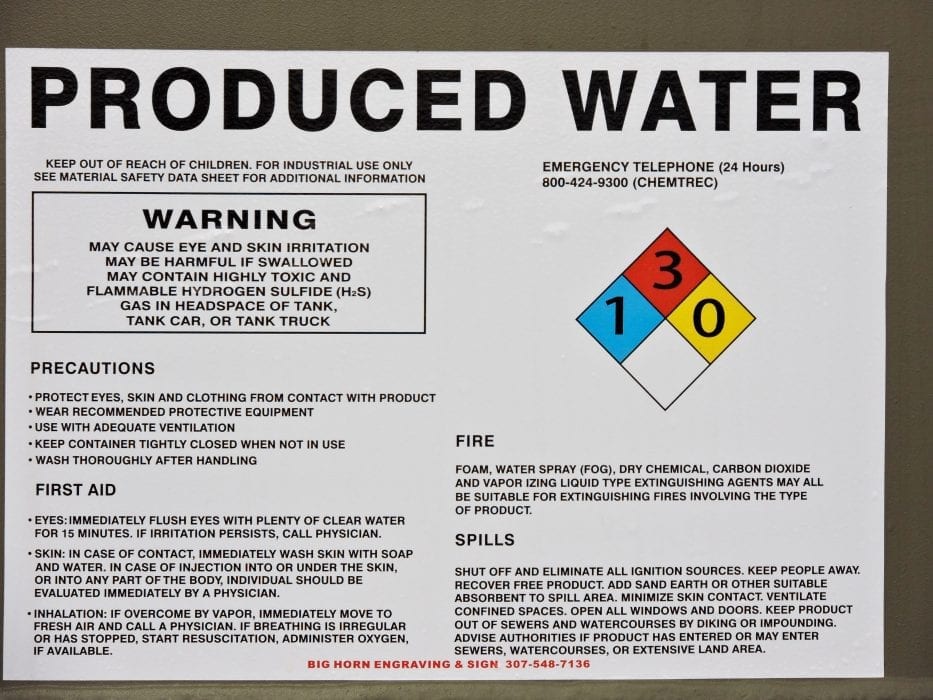 Not content simply to appeal the rule (which they did, via the New Mexico Oil and Gas Association), an industry front group called the WATR Alliance filed a new petition—WQCC 25-34(R)—that would reverse the Commission’s recent decision and open the floodgates to produced water reuse and discharge across New Mexico.
Not content simply to appeal the rule (which they did, via the New Mexico Oil and Gas Association), an industry front group called the WATR Alliance filed a new petition—WQCC 25-34(R)—that would reverse the Commission’s recent decision and open the floodgates to produced water reuse and discharge across New Mexico.
This proposal would authorize the dumping of oil and gas waste onto our farm fields and into our rivers and streams.
“Are you serious?” Commissioner Bill Brancard—a former oil and gas regulator—asked the petitioners at a July hearing. But the rest of the politically-appointed Commissioners quickly fell in line with the Governor’s mandate to prop up oil and gas at all costs.
With the Governor’s backing, the Commission agreed to move forward with formal rulemaking—a dramatic reversal from its prior decision to limit reuse and prohibit discharges.
Rushed, Rigged, and Reckless
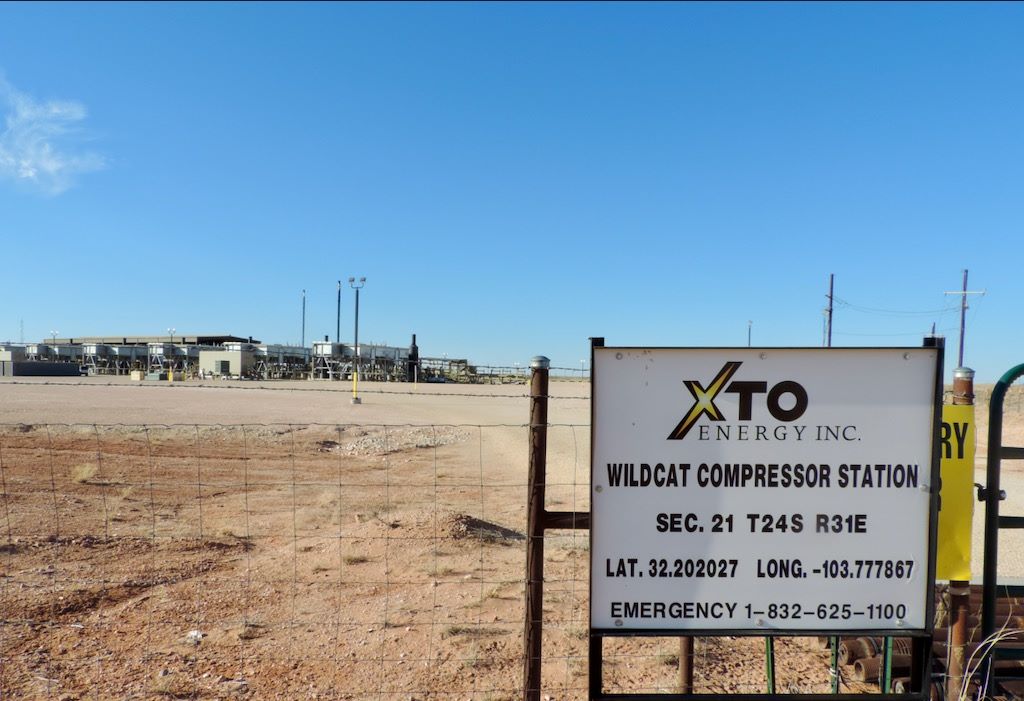
Exxon XTO site in New Mexico. Photo by WildEarth Guardians
Now, the Commission is trying to fast-track this industry proposal at unprecedented speed. While the petitioners have been working on this rule for over nine months, the public will be expected to analyze a 46-page, highly technical proposal in just a few short months.
And yet again, this is being done without adequate public engagement or Tribal consultation—in direct violation of the principles of free, prior, and informed consent.
This fight isn’t just for environmental groups. Tribes, farmers, landowners, fishermen, and river rafters all have a stake in the outcome. And so do you.
What Is “Produced Water”?
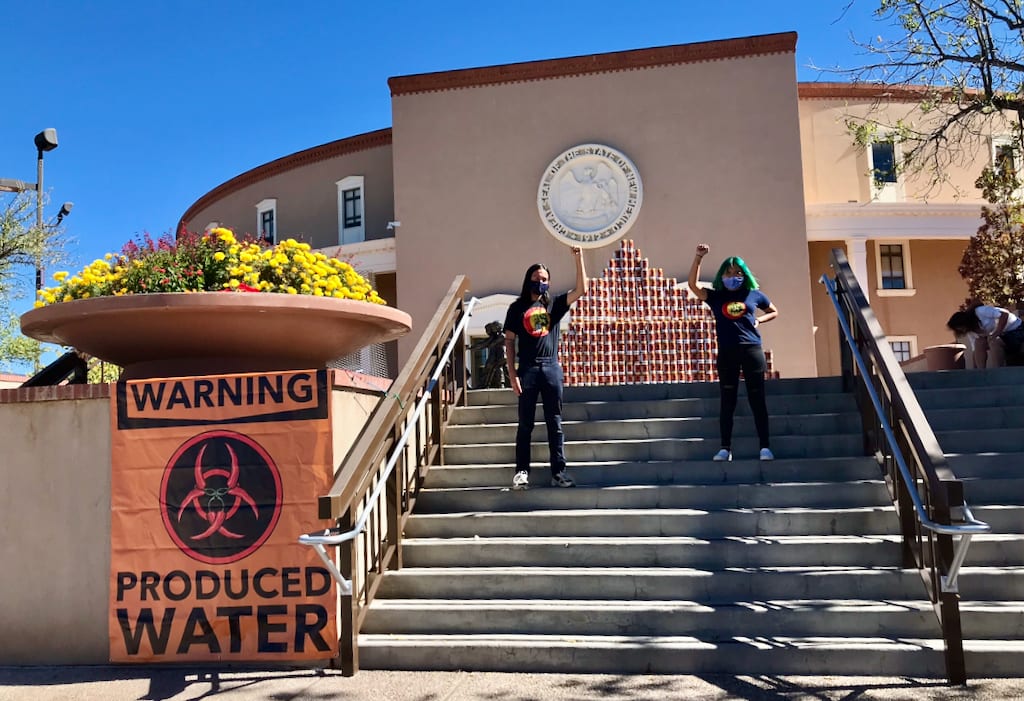
WildEarth Guardians photo
“Produced water” is the toxic, high-volume byproduct of oil and gas drilling and fracking. For every barrel of oil extracted, the industry generates 4 to 7 barrels of waste—often laced with:
According to state data, operators in New Mexico generated over 106 billion gallons of produced water last year alone—up from approximately 67 billion gallons in 2021. That’s enough toxic waste to fill more than 160,000 Olympic-sized swimming pools—a 60% increase in just three years.
Why Now?
With toxic waste volumes ballooning, the oil and gas industry is running out of legal, cost-effective ways to dispose of it. Deep well injection—once their go-to option—is now triggering earthquakes in southeastern New Mexico and West Texas.
So what’s their “solution”? Dump it on us.
On our farmlands, rivers, and food systems.
Who’s at Risk?
Everyone.
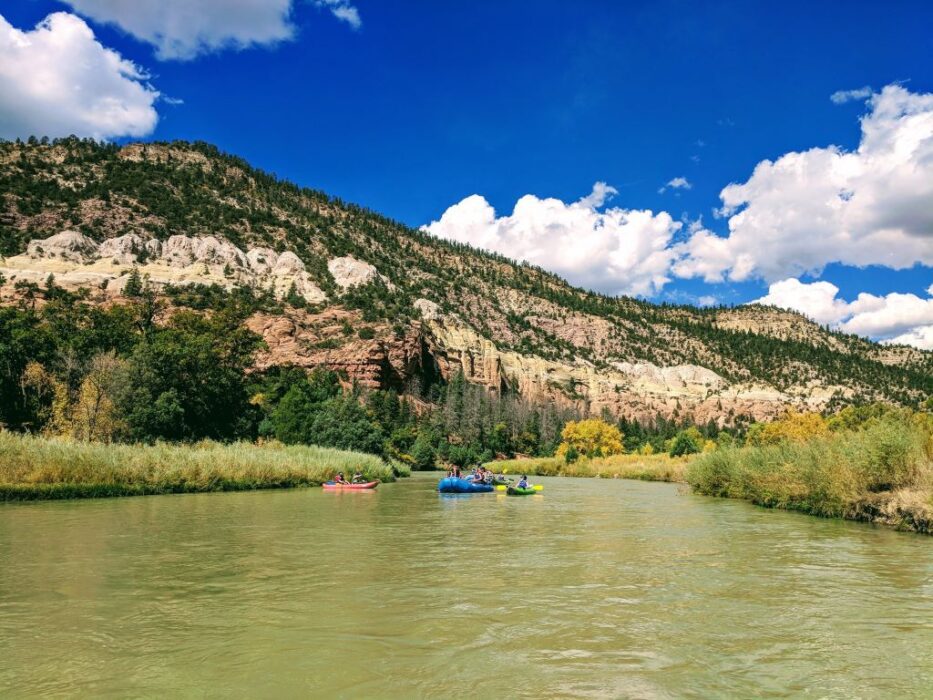
Rafting on the Rio Chama. Photo by WildEarth Guardians
Every major river basin in New Mexico—except the Gila—is at risk from this proposal. That includes the: San Juan, Canadian, Pecos, Rio Puerco, Rio Chama, and Rio Grande.
The rule would also allow direct application of produced water on lands and into waterways across 13 counties, including the fertile valleys of the Pecos and Rio Grande.
That means:
Threats to beef and dairy operations
Waste in drinking and irrigation water sources
Contaminated chile and pecan fields
Toxic discharges into fishing and rafting rivers
Can We Trust NMED to Keep Us Safe?
Unfortunately, no.

Oil and gas drilling on public lands in New Mexico. Photo by WildEarth Guardians.
The New Mexico Environment Department (NMED) has long lacked the capacity, resources, and political independence to regulate this threat:
NMED has never issued a single permit for surface water discharge of even conventional pollutants.
The agency only just this year received authority to begin developing a state permitting program (SB 21).
NMED leadership has acknowledged they lack the funding and staff to enforce existing rules.
NMED staff were barred from participating in this rulemaking—even though the agency would be responsible for implementing it.
And if you need more proof, just look at the data. Spills of produced water happen multiple times per day in New Mexico. Neither industry nor regulators have shown they can manage this waste safely in the real world.
Follow the Money
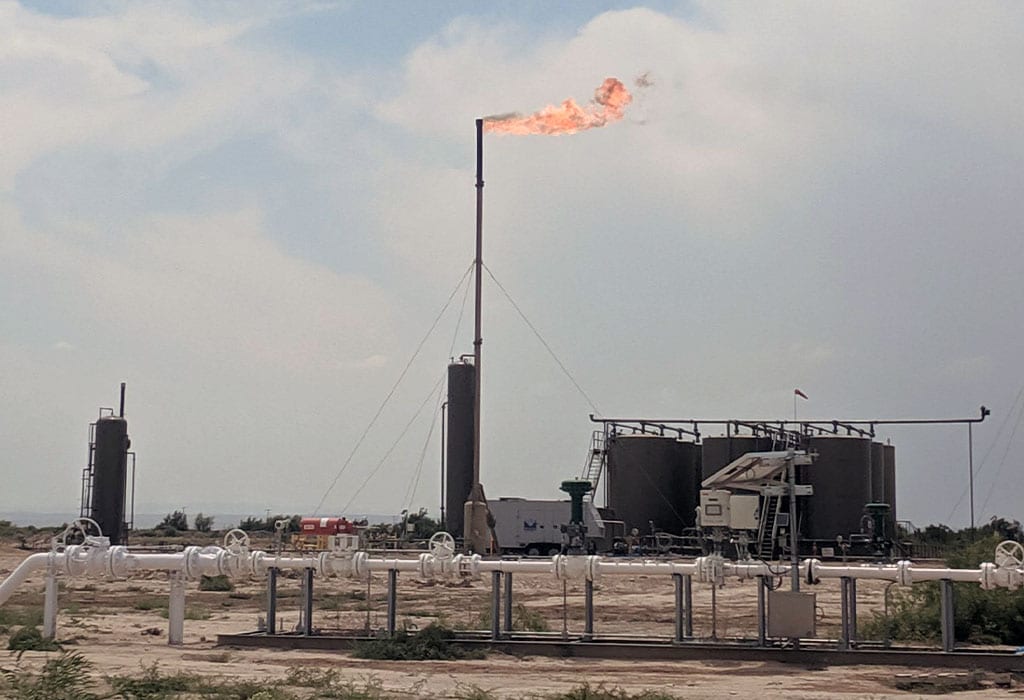
A fracking operation in New Mexico. Photo by WildEarth Guardians.
With Chevron, Oxy, and other oil giants sitting on the board of the WATR Alliance, their endgame is clear: turn a massive waste problem into a revenue stream. Dumping toxic waste into rivers and calling it “recycling” isn’t a water solution—it’s a profit scheme.
And the Lujan-Grisham administration? They’re rolling out the red carpet.
But polluting our rivers, aquifers, and farm fields with fracking waste is not the path to a climate-resilient, sustainable water future.
We have to do better.
What You Can Do
The political winds may be against us, but this fight isn’t over.
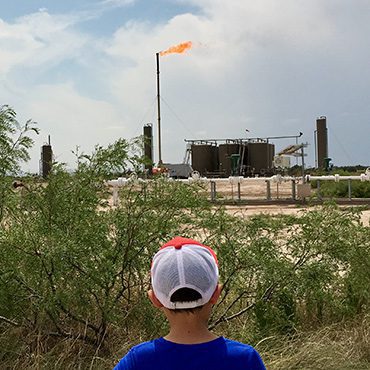
Flaring in the Permain Basin, New Mexico. Photo: WildEarth Guardians
WildEarth Guardians and our allies will be fighting this proposal in the rulemaking process, but we can’t do it alone.
The Water Quality Control Commission—and the Governor—need to see that New Mexicans from all walks of life value clean water, healthy soil, and safe food more than another oil industry handout.
If you’re a farmer, rancher, river guide, public health worker, or just someone who enjoys a green chile cheeseburger—you’ve got skin in the game.
Speak Out
Prepare to testify at the upcoming WQCC hearing (likely December 2025 in Jal, NM)
Submit a public comment opposing WQCC Petition 25-34(R)
Learn more and get involved.
Ready to take the next step? Here is our guide for taking action.
New Mexico’s future is not for sale.
Let’s keep oil and gas waste out of our rivers, off our farms, and out of our food.












